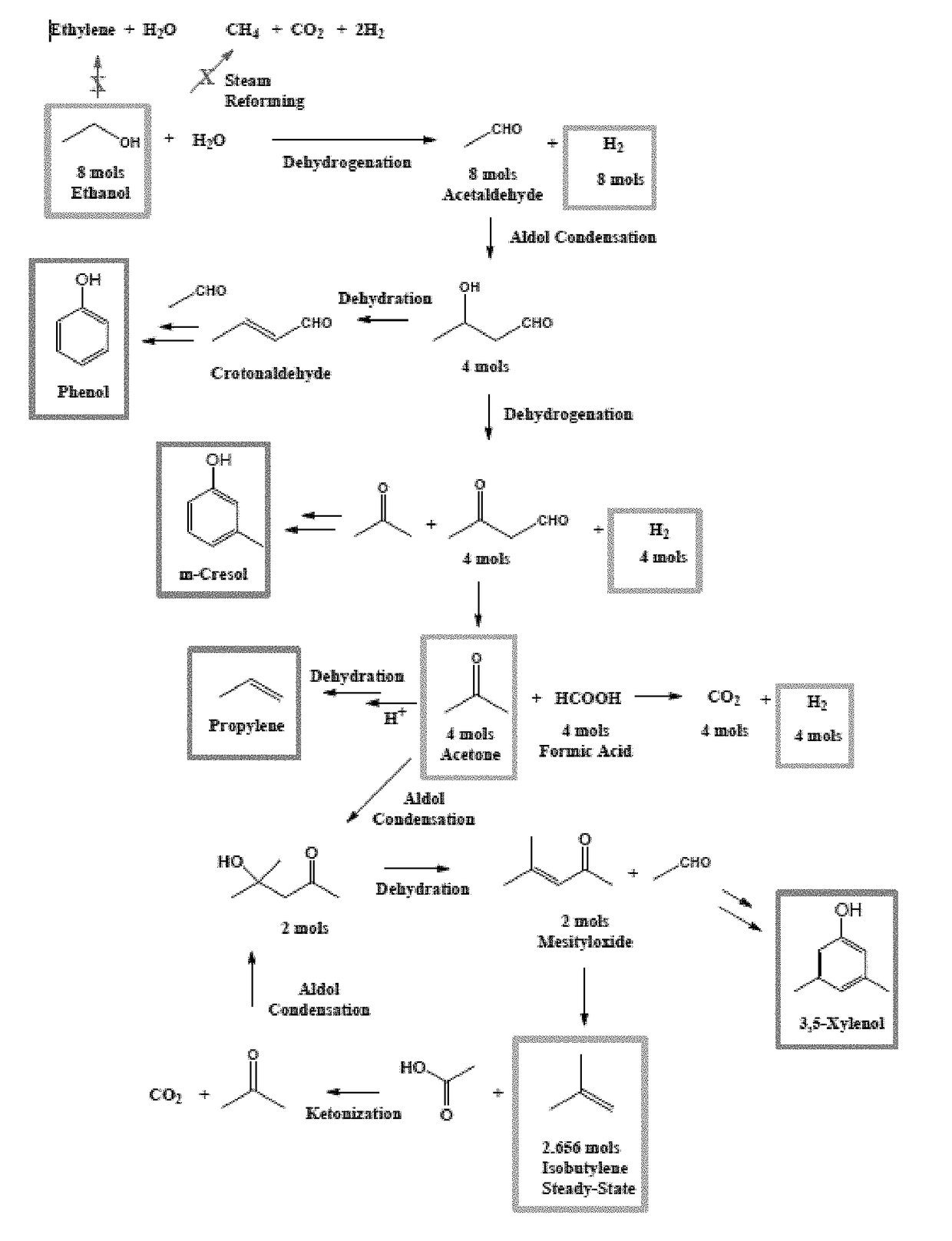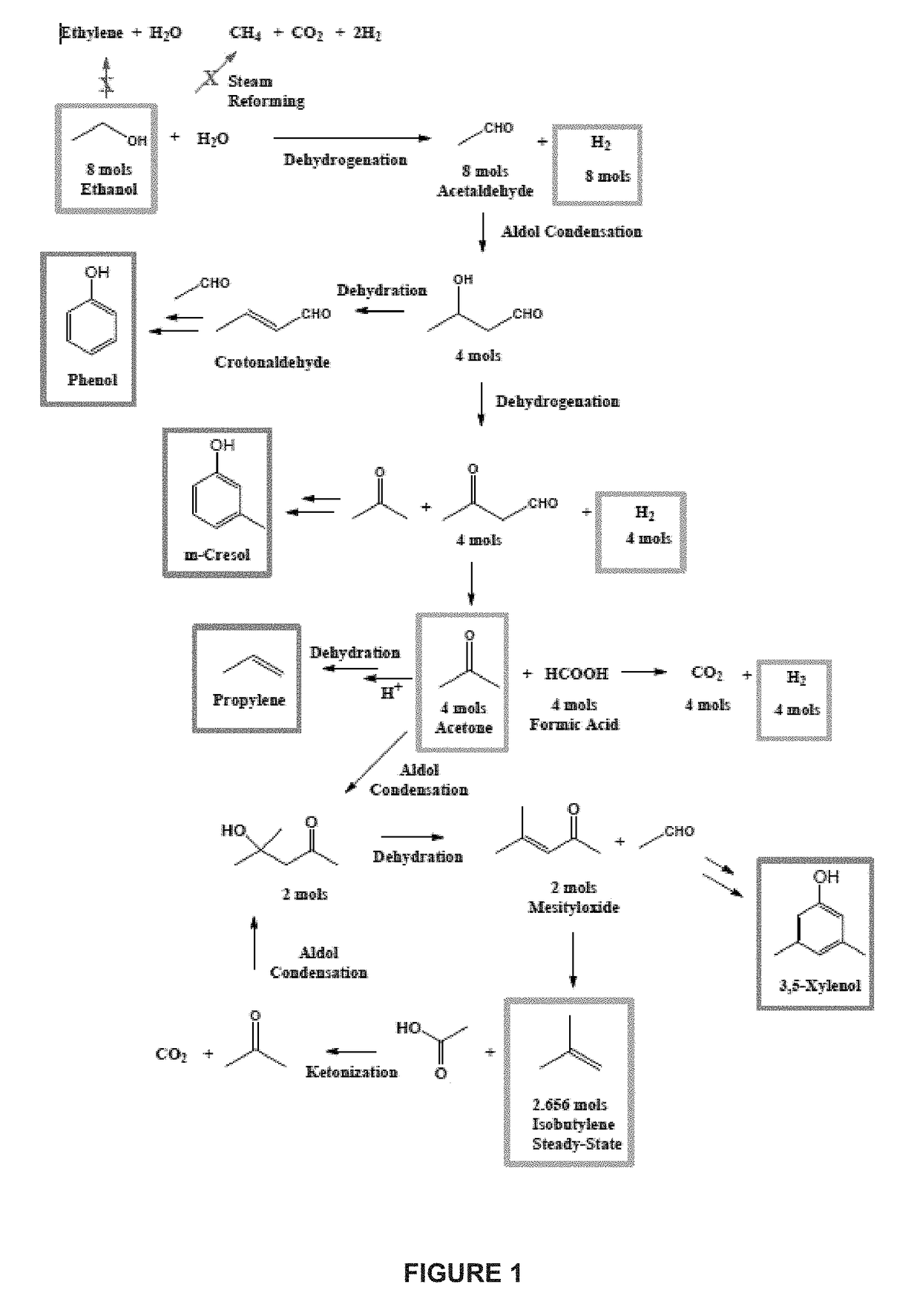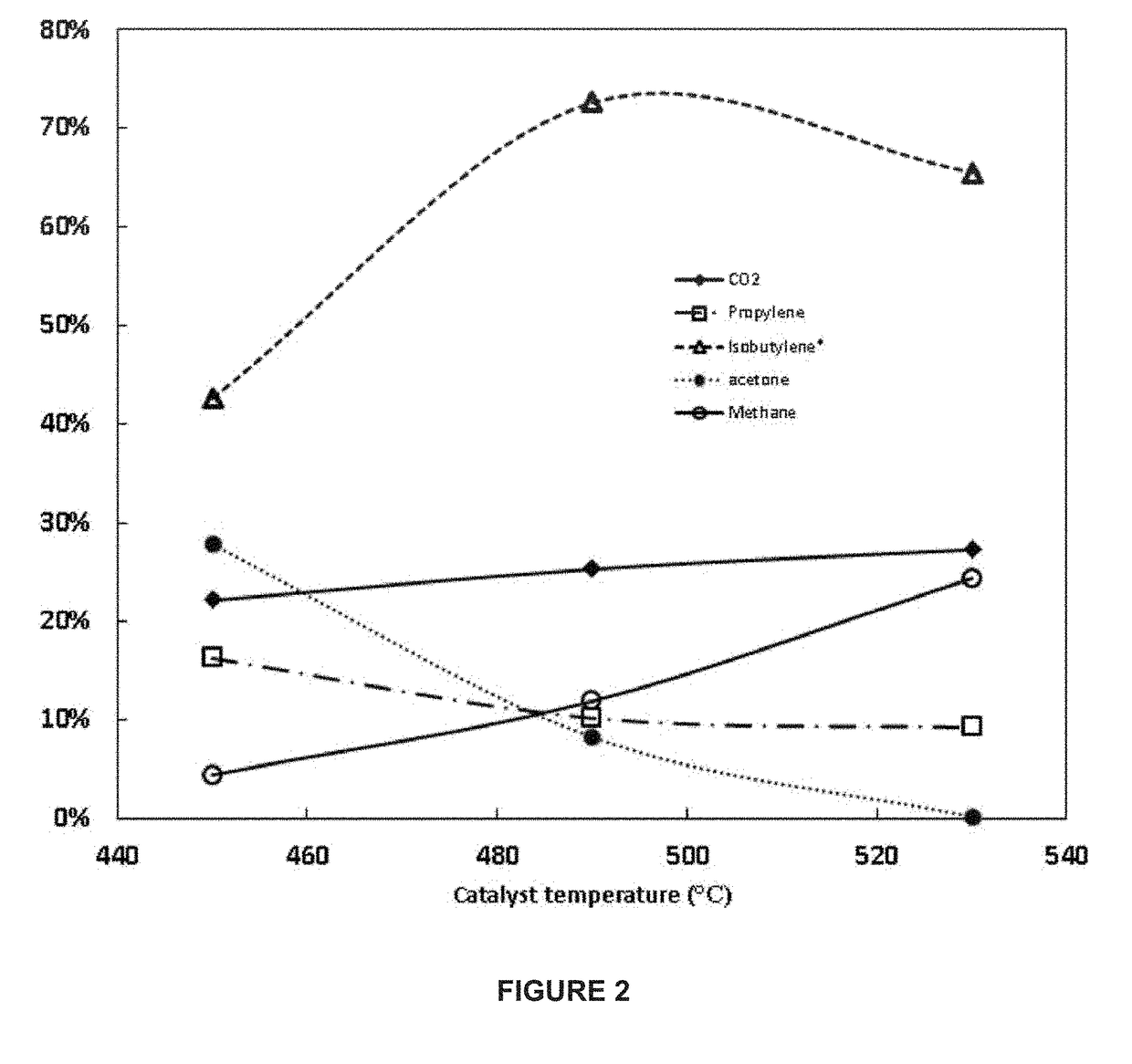Methods for conversion of ethanol to functionalized lower hydrocarbons and downstream hydrocarbons
a technology of functionalized hydrocarbons and ethanol, which is applied in the direction of physical/chemical process catalysts, bulk chemical production, metal/metal-oxide/metal-hydroxide catalysts, etc., can solve the problems of less than optimal methods of sun et al. and mizuno et al., and achieve favorable economics and high selectivity
- Summary
- Abstract
- Description
- Claims
- Application Information
AI Technical Summary
Benefits of technology
Problems solved by technology
Method used
Image
Examples
example 1b
th 14.8% Molar Concentration of Ethanol
[0260]Ethanol and water were mixed in a 1:2 ratio by mass. The ethanol-water mixture was fed to the reactor at a rate of 0.1 mL / min. A co-feed of nitrogen enables quantification of gaseous products including isobutylene, propylene, CO2, acetone and methane. The total inlet mole concentration of ethanol for the baseline condition is 14.8%. The catalyst temperature is set to 485° C. The stainless steel reactor is loaded with 2.5 g of Zn—Zr mixed-metal-oxide catalyst prepared in Example 1A.
[0261]The product distribution based on carbon selectivity for the baseline conditions described above is shown in Table 1. The primary product is isobutylene at 45% carbon selectivity. The 45% carbon selectivity represents 67% of the theoretical maximum. There is 8% carbon converted to propylene (i.e., 11% of the theoretical maximum) and 14% carbon converted to acetone (i.e., 19% of the theoretical maximum). 26% carbon is converted to CO2 and the remainder is c...
example 1c
th 25.3% Molar Concentration of Ethanol
[0262]The purpose of this example is to illustrate high isobutylene selectivity at increased concentrations of ethanol in the ethanol-to-isobutylene reactor feed.
[0263]In this example, ethanol and water were mixed in a 1:1 ratio by mass. The ethanol-water mixture was fed to the reactor at a rate of 0.1 mL / min. A co-feed of nitrogen enables quantification of gaseous products including isobutylene, propylene, CO2, acetone and methane. The total inlet mole concentration of ethanol for this experiment is 25.3%. The catalyst temperature is set to 485° C. The stainless steel reactor is loaded with 2.5 g catalyst. The catalyst is a Zn—Zr mixed metal oxide as prepared in Example 1A.
[0264]The carbon selectivity for increased-ethanol-concentration experiments is shown in Table 2. The primary product is isobutylene at 46% carbon selectivity. The 46% carbon selectivity represents 69% of the theoretical maximum. There is 14% carbon converted to propylene (i...
example 1d
er Temperature Range
[0265]The following series of experimental results show the product selectivity for an inlet ethanol mole concentration of 14.8% with varying catalyst temperatures.
[0266]The baseline result is represented in the middle of FIG. 2 (485° C.). At lower temperatures (450° C.) the isobutylene selectivity is reduced while the acetone selectivity increases. At high temperatures (530° C.), the acetone selectivity decreases to a minimal value while the methane selectivity increases to 24%. At all temperatures tested the isobutylene selectivity was greater than 40% of the theoretical maximum with an inlet ethanol mole concentration of 14.8%.
PUM
| Property | Measurement | Unit |
|---|---|---|
| Temperature | aaaaa | aaaaa |
| Temperature | aaaaa | aaaaa |
| Temperature | aaaaa | aaaaa |
Abstract
Description
Claims
Application Information
 Login to View More
Login to View More - R&D
- Intellectual Property
- Life Sciences
- Materials
- Tech Scout
- Unparalleled Data Quality
- Higher Quality Content
- 60% Fewer Hallucinations
Browse by: Latest US Patents, China's latest patents, Technical Efficacy Thesaurus, Application Domain, Technology Topic, Popular Technical Reports.
© 2025 PatSnap. All rights reserved.Legal|Privacy policy|Modern Slavery Act Transparency Statement|Sitemap|About US| Contact US: help@patsnap.com



